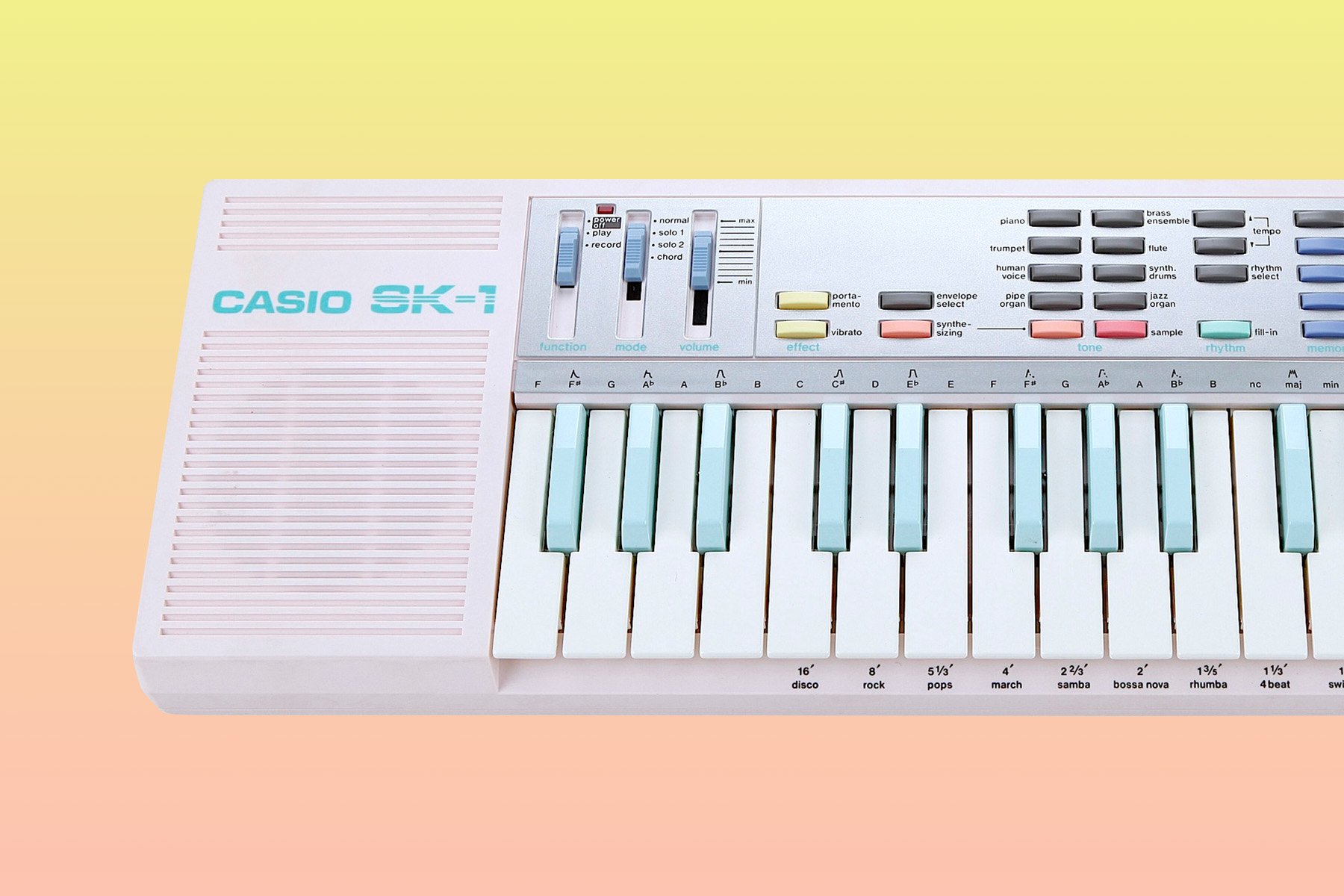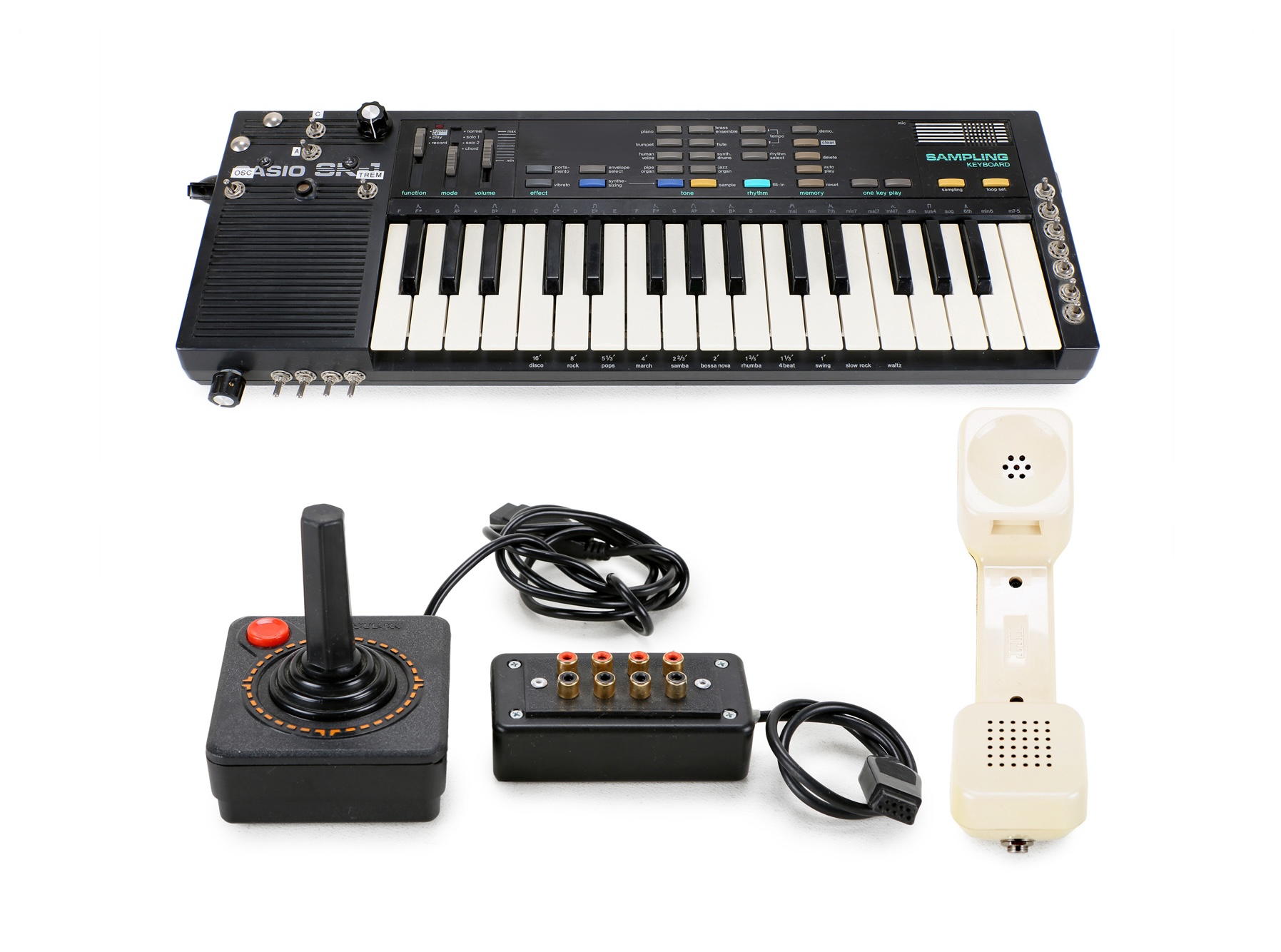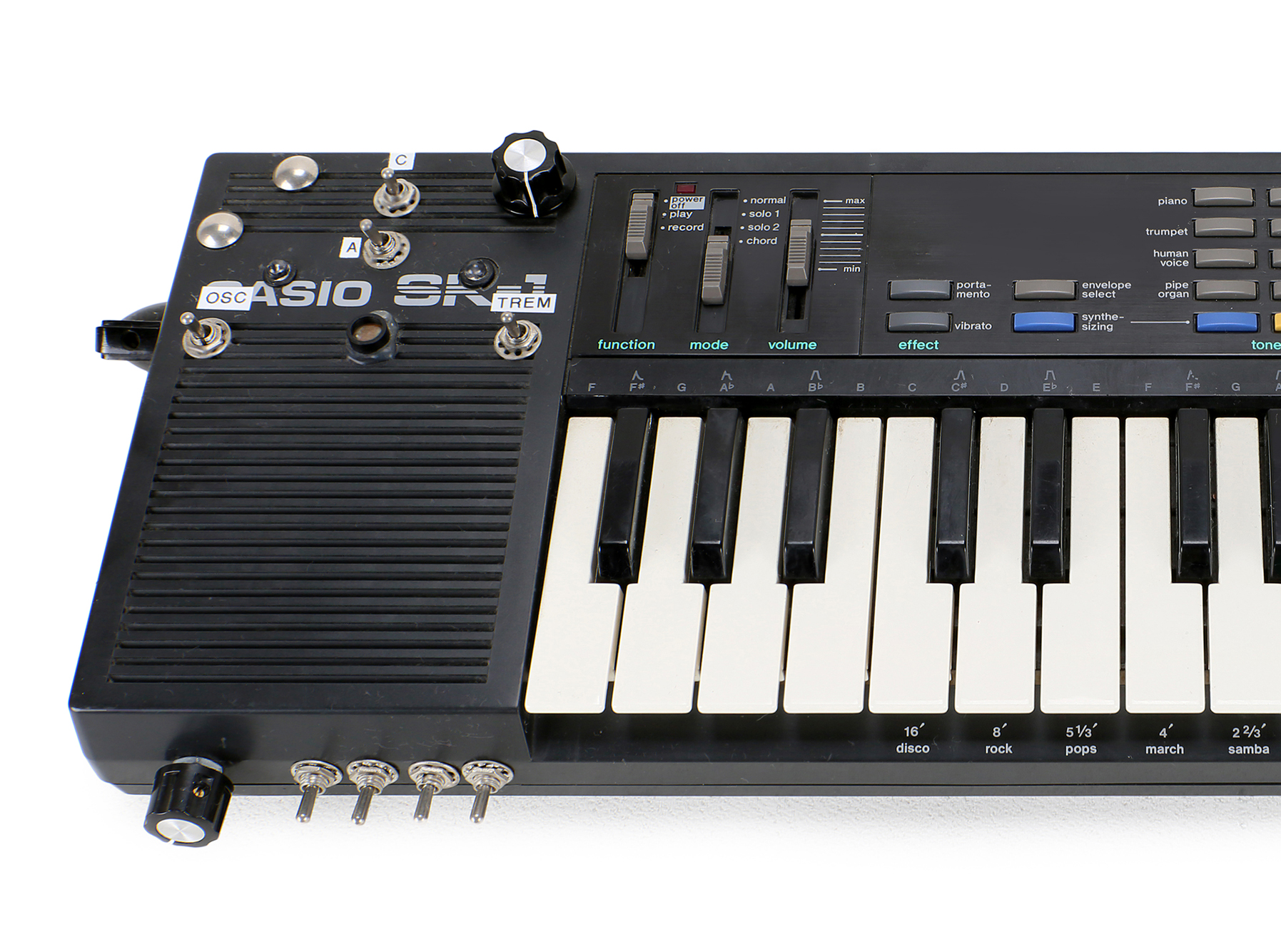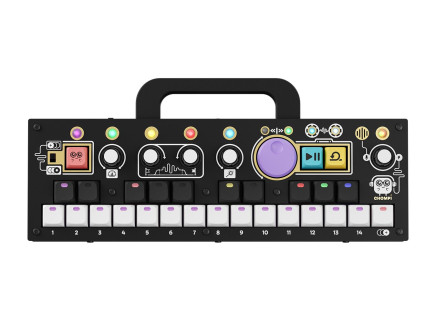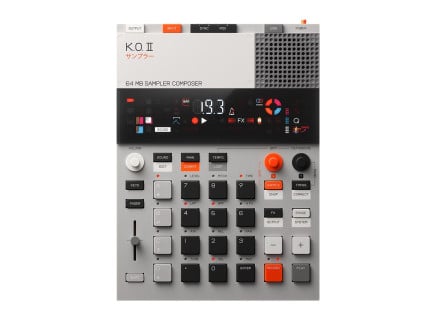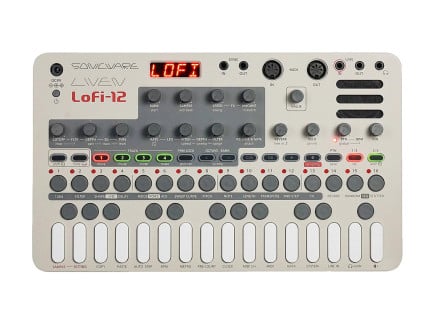As digital audio started to improve over the course of the 1980s, more companies started releasing novel products powered by the technology. With the onset and rise of sampling techniques, it didn’t take music manufacturers long to start releasing products that included their own take on the idea.
Casio’s SK-1 is a perfect example. This small consumer keyboard/sampler allowed users to create and manipulate their own lo-fi sounds through an inexpensive and easy-to-use interface.
Here we take a look at what sampling was like around the time of the SK-1’s release in 1985, its features, how it became a popular platform for modifications, and a brief history of each model in the SK series and the legacy it left behind.
Before the SK-1
The early to mid-1980s saw significant moves forward in synthesizer and sampler designs. Digital technology was starting to come into its own, but analog synths were still the standard. They started integrating digital features like patch memory and instant recall as the market progressed toward fully digital designs.
When MIDI was introduced in 1983, everything changed. This standard allowed for easy connection of various types of music gear to synchronize with each other so users could build complicated music production setups. If you think about it, it’s kind of crazy how popular and relevant it is over 40 years later.
As digital music technology became more and more sophisticated sampling grew with it. Keyboard models like the Fairlight CMI and E-mu Emulator were some of the most popular samplers of the time, but they were designed for the professional market and came with appropriately high price tags. Even though the idea was still fairly new in 1985, there was a glaring hole in the market—a sampler/synthesizer hybrid created specifically for everyday consumers. And Casio answered the call.
Though they had professional models in their lineup, Casio keyboards were best-known for catering to the consumer market. The SK-1 offered a mix of sampling, synthesizer, and instrument sounds in a convenient and affordable ($100 at the time) package that was fun and easy to use. Casio’s SK-1 was unique for a lot of reasons. This small sampling keyboard was released in 1985 and made waves immediately. The biggest thing that set it apart from other similar instruments was the onboard sampling features and target at the home user market. Sampling was still very new at the time, so the fact that this small “toy” keyboard offered a way to record and manipulate samples was a game changer on its release in the mid-1980s.
Casio SK-1 Features
The compact polyphonic SK-1 featured 32 small piano keys and could play up to four notes at a time. Its sampling engine was built on a 8-bit PCM standard and had a sample rate of 9.38kHz over 1.4 seconds of sampling time.
Multiple but modest sounds could be manipulated a few ways through the additive synthesis options or through 13 envelope presets or portamento and vibrato controls. There was also a basic sequencer for stringing sounds together as well as preset chord accompaniment and rhythm patterns.
It had some of the most robust I/O out of any model in the greater SK series, with microphone and line level inputs and a line out. A built-in microphone allowed users to input samples without any additional gear and the internal speaker provided monitoring.
Despite being such a seemingly basic device it offered a lot of bang-for-the-buck in terms of the breadth of features for its modest price point. It was so influential that other companies started releasing their own versions of the idea. Yamaha had the VSS-30 and RadioShack had the Realistic Concertmate 500 were two of the most popular.
In Use
Even though the SK-1 was targeted at the consumer market and had limited sounds it still made its way onto plenty of recordings with its endearingly lo-fi sounds, mostly with indie and fringe artists in the pop, hip hop, and experimental genres.
Some major artists found the gritty, distinctively '80s sounds useful for adding accents and flair to their recordings. The Beastie Boys, Depeche Mode, and even Madonna used it in their work in the middle and later parts of the 80s. It also eventually found a home on recordings by more modern artists including Nine Inch Nails, Bloodhound Gang, Fatboy Slim, Beck, even rock artists like Blur and Incubus.
But the sounds of the SK-1 found its real home with more underground artists that loved how gritty and unpredictable it was. It was the perfect marriage of noise, dissonance, and melody and is a unique reminder that creativity isn’t determined by the tools but how the artist uses them. Even from a pocket-sized keyboard from the 1980s.
Circuit Bending
It’s commonplace today for users to open up circuits and do their own experimenting, but when the SK-1 was released there weren’t many playing around with customizing the electronics of devices, also known as “circuit bending”. Today, finding mods is as easy as an internet search or reading through forums, but when the SK-1 was released in the mid 80s there was really only one resource—music magazines.
Though it didn’t really become a fan-favorite mod platform until the later half of the 1990s, Keyboard Magazine published an article on how to add MIDI functionality to the unit in 1987. Experimental Musical Instruments writer Reed Ghazala published an extensive how-to in the late '90s that detailed different ways to “bend” the circuit. Today there are countless YouTube videos and various tutorials on different mods that can be done to it.
The SK-1 was the perfect platform for electronics nerds to let their imaginations run wild. Some of the mods that turn this simple consumer instrument into something else entirely include switches to affect each polyphonic note, a patchbay for recording the onboard effects, patchable switching, alteration switches for getting variation from the sound loops, and a reclocking knob that lets you manipulate the clock speed.
SK Series
There are a number of models in the SK line, each building on the design of the ones that came before it and adding its own twist on the all-in-one sampler, mini sequencer, keyboard idea.
SK-2
The second version added some new features to the first model’s design like different ways to play with the samples. They could be looped, run in reverse, or you could affect the envelope to create new sounds from them altogether.
It still has 32 keys and four-note polyphony, but the keybed was moved to a central orientation instead of the offset design of the first model. For some reason, Casio removed the audio outputs, but otherwise it’s very similar to the SK-1.
SK-5
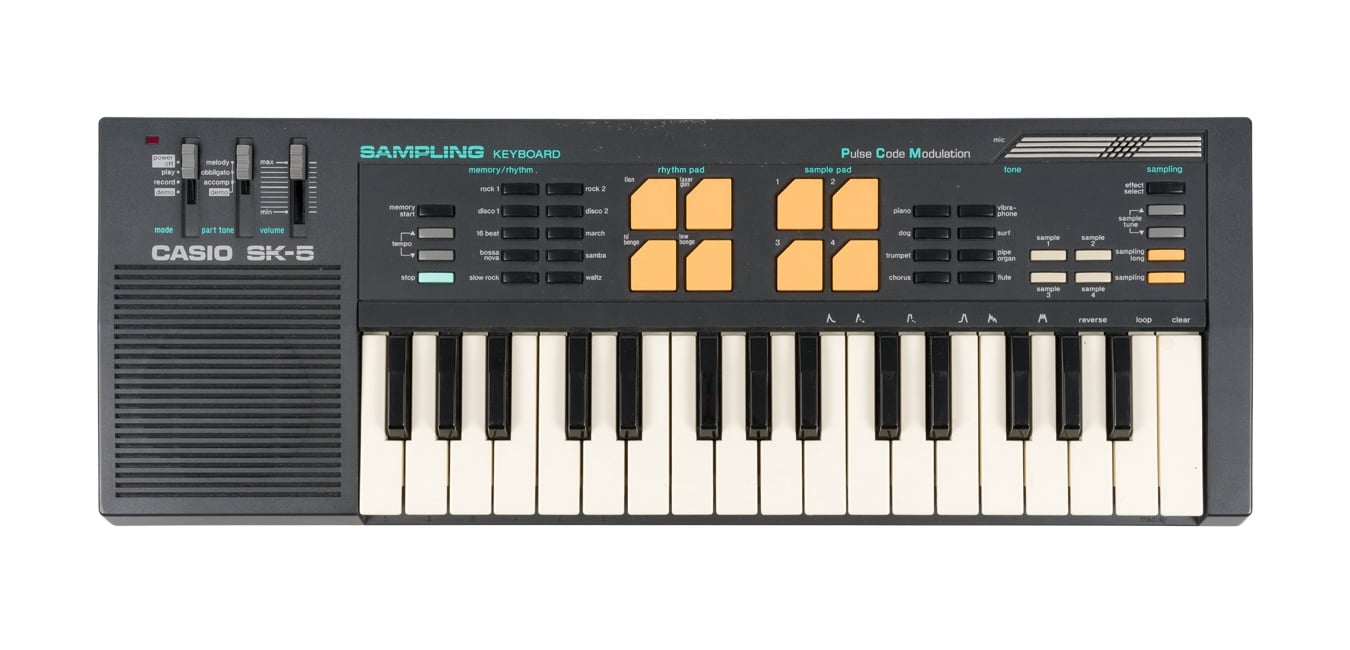
Casio’s third model, oddly titled the SK-5, is laid out much like the SK-1 with the offset keybed. It includes more instrument presets than the two previous models like flute, pipe organ, surf, and dog (classic).
Four effect pads were added to manipulate the sounds with bongos, laser guns, and even a lion’s roar. There are seven demo songs too, up from the single option from the SK-1 and SK-2. Overall it had a few more features, but wasn’t drastically different in sound from the first two models.
SK-8
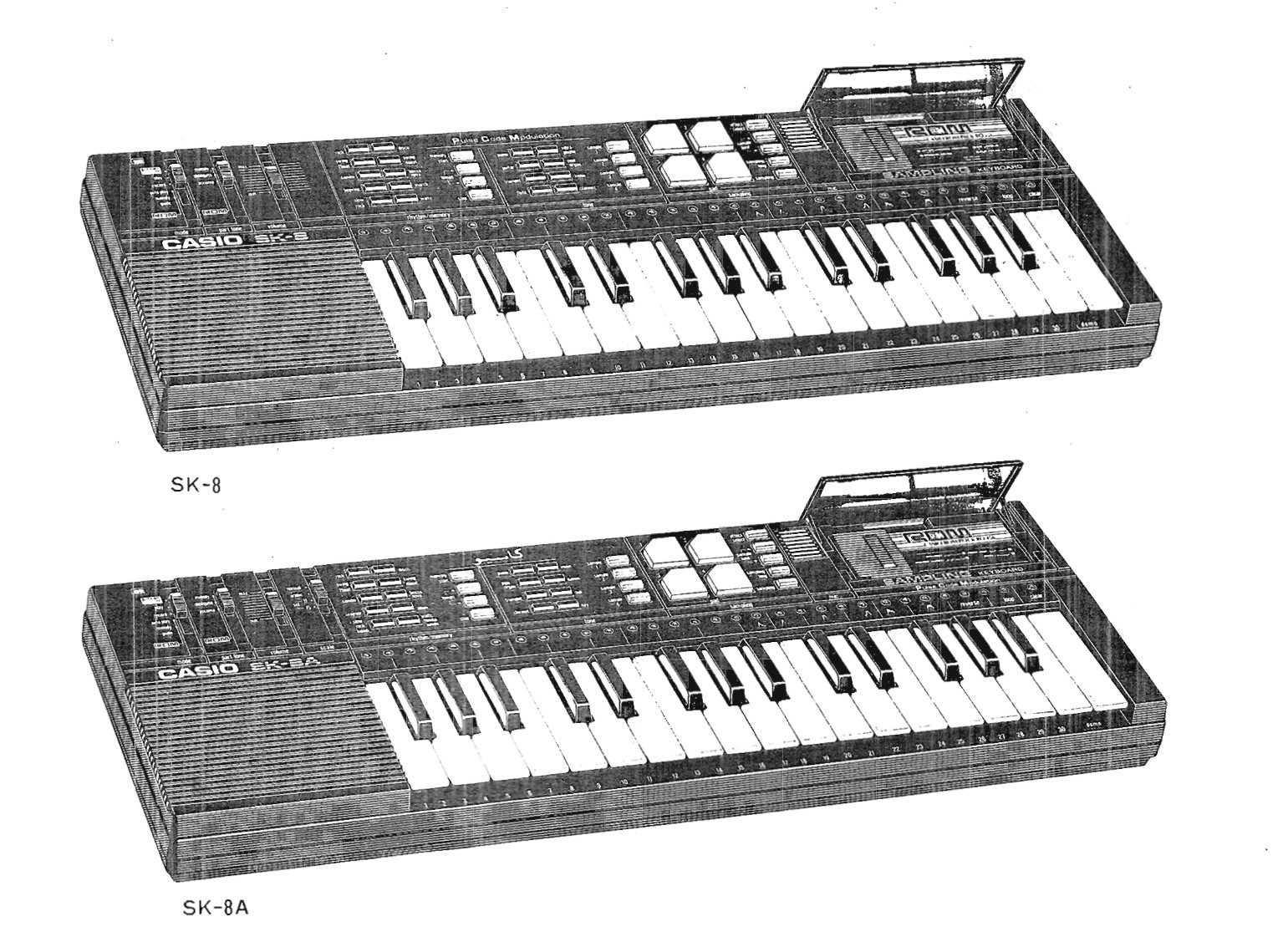
The SK-8 was the biggest step forward yet in the line. It could store up to four samples as opposed to the single sample of the previous model. Power off didn’t erase them either, as they were stored in battery backup memory.
Onboard rhythms expanded to 10 and it had a total of eight instrument sounds. Six envelopes and tempo buttons let users manipulate the samples. Training features are included too, with a “melody guide” and lighted keys. It had microphone and line inputs as well as a line out.
SK-10
The smallest of the SK series is essentially a scaled-down version of the SK-1, but it still offered some new ideas to the line. It allowed samples to be reversed, and they could be sequenced right after capture. But like the SK-1 it could only hold one sample.
It had the offset keybed and slightly smaller keys, 11 drum patterns in different genres, and eight instrument sounds. The sequencer was more robust and could hold 400 polyphonic steps, but it didn’t have the battery backup memory so everything was lost when power was cut.
SK-60
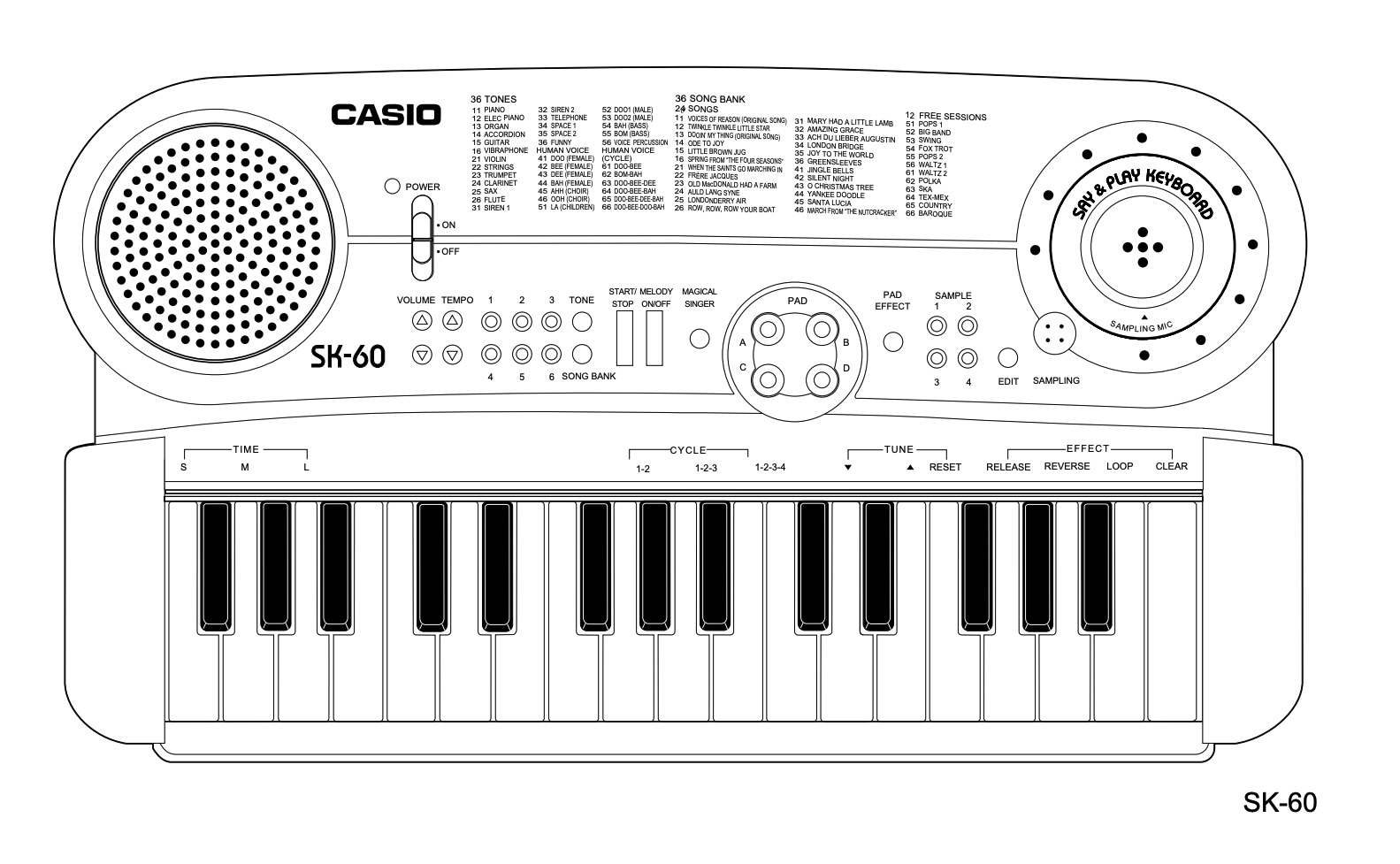
1996’s SK-60 was the last small sampling keyboard from Casio. They focused on specific sound effects, like the human voice effects similar to the popular Fairlight CMI. It supports four samples that can each be assigned to the four effect pads.
The polyphony was increased to 16 notes, and there were now 36 preset sounds and 12 rhythm tracks, but there was no way to output sounds. A “magical singer” button lets users replace rhythm sounds with vocals. It was an interesting mix of the “toy” vibe of the previous SK models with some ideas from Casio’s more professional products factored in.
SK-100
With the SK-100 the key count was increased to 49, so it looked much more like a professional keyboard. It offered two sample slots, the first held .81 seconds and the second slot held 1.62 seconds and they stayed in memory even when the unit powered down.
It included bass and chord accompaniment but the additive synth features were reduced. This model provided an even more expansive platform for modding the circuit than previous versions.
SK-200
Another model that resembles a more traditional keyboard, the SK-200’s keybed was reduced to only 29 keys. But the keyboard is split, allowing for sample manipulation over the top two-thirds and access to synth sounds on the bottom third section.
It stores four samples that stay in the internal memory even when the unit is powered off. The onboard microphone and mic and line inputs are present. Like the previous model, it had chord sequences, basslines, and drum patterns—but they were still notably lo-fi.
Considering that it came to market in 1987 when MIDI had really started to gain steam, it’s a shame Casio still didn’t support the standard on the SK units.
SK-2100
The last and most advanced in the SK line pretty much took all of the elements users liked most about previous models and put them all together for the 2100. Here the sampler was upgraded to eight voices and the sample rate was increased to 10kHz.
Its 49 keys could be split and each featured sounds relative to the octave range of the keyboard. Drum sounds were increased to 20 patterns with fills, and chord patterns increased to 159. A range of editing features via buttons were located above the keybed.
Legacy
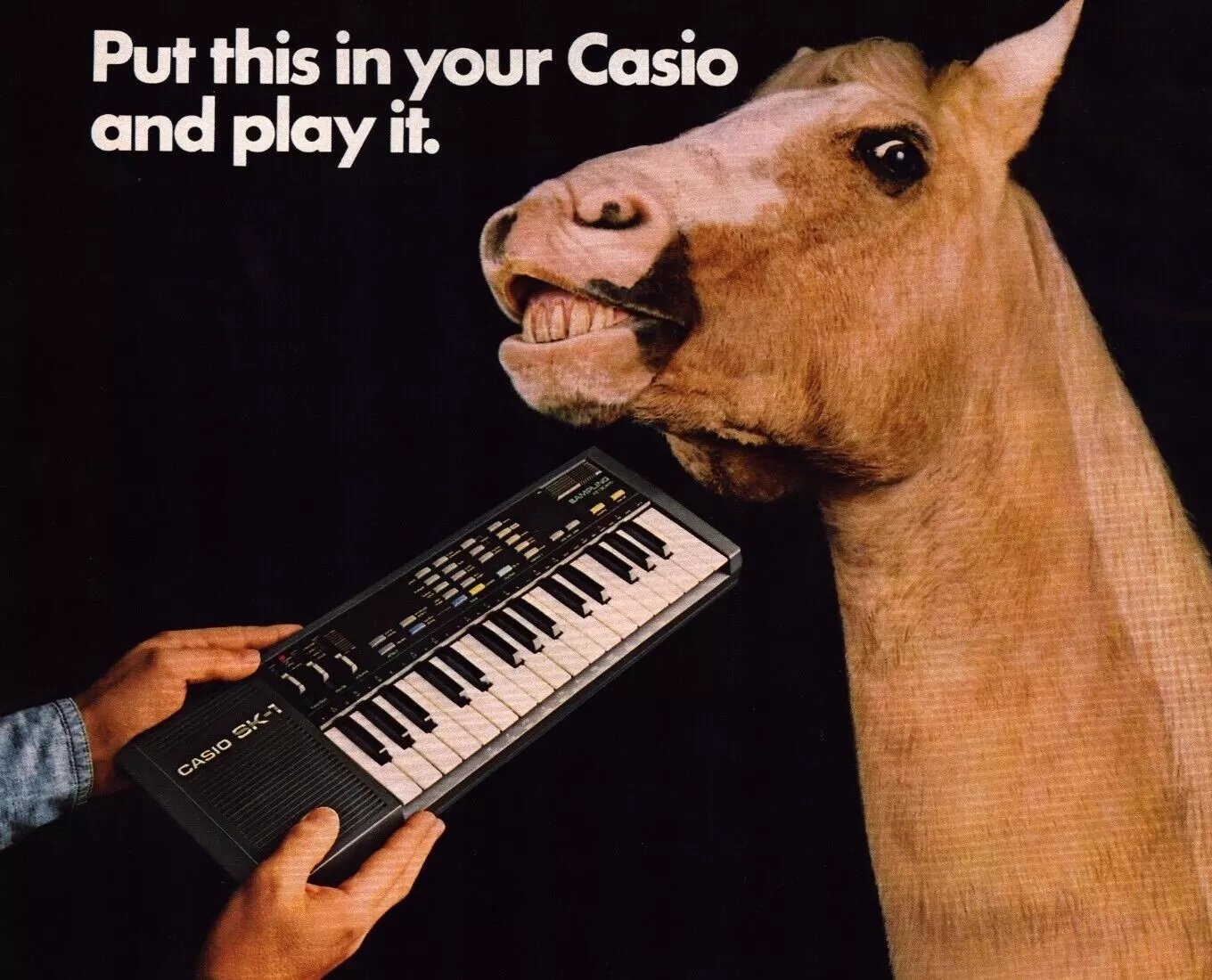
With the SK-1 Casio made the music manufacturing industry rethink what keyboard samplers were capable of. It opened the doors for instrument ideas that still resonate today, like the Akai MPC and the Chompi Sampler. As lo-fi as the sounds on the SK might be, they were charmingly weird. It by no means did it all, but what it did do it did well.
With the SK-1, the small sampler keyboard concept kicked off. As digital technology continued to improve and more advanced models were released, the SK line held its appeal for its quirky, lo-fi sounds, ease of use, and how easy it was for circuit nerds to perform all kinds of custom mods to it.
Plenty of other manufacturers came out with their own versions, but nothing compared to the appeal of the original: often imitated but never quite duplicated.
Brandon Stoner is a lifelong musician and audio engineer who owns more guitars than anyone needs. As a lover of all things writing and music technology, he crafts every piece with his dog Max on his lap.
Portfolio | LinkedIn | Twitter

